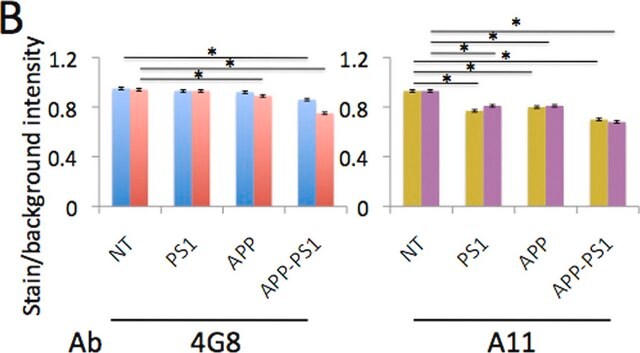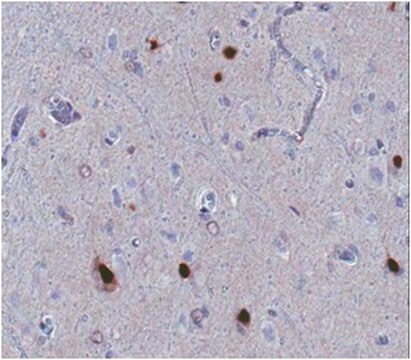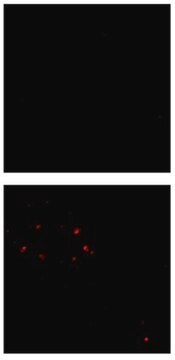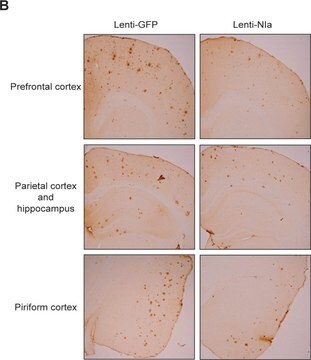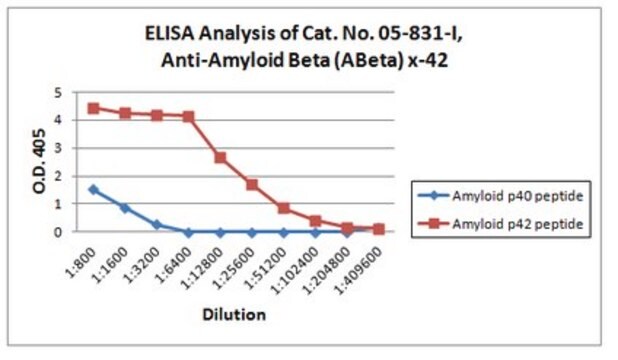MABN879
Anti-phospho-Amyloid beta Antibody (Ser26), clone 5H11C10
clone 5H11C10, from mouse
Synonym(s):
Aβ peptide, Ser26 phosphorylated, Abeta peptide, Ser26 phosphorylated, Amyloid β peptide, Ser26 phosphorylated, Aβ1-40, Ser26 phosphorylated, Aβ1-42, Ser26 phosphorylated, Abeta1-40, Ser26 phosphorylated, Abeta1-42, Ser26 phosphorylat
About This Item
Recommended Products
biological source
mouse
Quality Level
antibody form
purified immunoglobulin
antibody product type
primary antibodies
clone
5H11C10, monoclonal
species reactivity
human
technique(s)
ELISA: suitable
immunofluorescence: suitable
western blot: suitable
isotype
IgG1κ
NCBI accession no.
UniProt accession no.
shipped in
ambient
target post-translational modification
phosphorylation (pSer26)
Gene Information
human ... APP(351)
General description
Specificity
Immunogen
Application
Western Blotting Analysis: 2 µg/mL from a representative lot detected Ser26-phosphorylated oligomeric amyloid beta (pA ) peptides in brain extracts from 8-month old APP/PS1KI transgenic mice, but not in extracts from age-matched non-transgenic mice (Courtesy of Dr. Kumar Sathish, University of Bonn, Germany).
Note: Formic acid (88%) treatment following heat retrieval is recommended for immunohistochemical detection of aggregated intraneuronal Abeta peptides in brain sections (Kumar, S., et al. (2013). Acta Neuropathol. 125(5):699-709; Christensen, D.Z., et al. (2009). Brain Res. 1301:116-125).
Quality
Isotyping Analysis: The identity of this monoclonal antibody is confirmed by isotyping test to be IgG1κ.
Target description
Physical form
Other Notes
Not finding the right product?
Try our Product Selector Tool.
Storage Class Code
12 - Non Combustible Liquids
WGK
WGK 1
Flash Point(F)
Not applicable
Flash Point(C)
Not applicable
Certificates of Analysis (COA)
Search for Certificates of Analysis (COA) by entering the products Lot/Batch Number. Lot and Batch Numbers can be found on a product’s label following the words ‘Lot’ or ‘Batch’.
Already Own This Product?
Find documentation for the products that you have recently purchased in the Document Library.
Our team of scientists has experience in all areas of research including Life Science, Material Science, Chemical Synthesis, Chromatography, Analytical and many others.
Contact Technical Service
